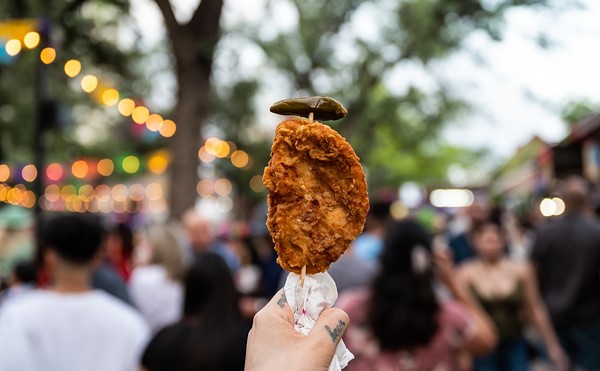Bioshock 2’s biggest problem is that it’s a sequel. At the hands of a new development team at 2K Marin, Bioshock 2 stands out as an exceptional game. As a sequel to the original Bioshock, a game that was less a game and more a postmodern reflection on medium itself, it disappoints, never matching its predecessor.
The opening of Bioshock 2 feels like coming home. You awaken in ruins in the old part of Rapture, an underwater city and objectivist paradise created by John Galt archetype Andrew Ryan. A splicer (read: crazy super powered freak) bounces off the walls of the larger chamber before you, knocking over a statue. On the wall someone has scrawled the words, “Fallen, fallen is Babylon,” a reminder of Rapture’s former decadence as a haven of lassez faire capitalism. Welcome back.
This feeling of nostalgia permeates the rest of the game. It plays like an expansion pack of the first, with most of the virtues of the original intact. The most-publicized change is that you now play as a prototype Big Daddy. Big Daddies are barely-human warriors dedicated to protecting the Little Sisters, mutated girls who function as a commodity in post-civilized Rapture; their bowels hold the genetic material ADAM, used to activate the power of plasmids. Disappointingly, your prototype Big Daddy handles nearly the same as the human protagonist of the first game. He’s no faster and dies just as easily, especially against other Big Daddies. As early as two hours in I found myself forgetting I was supposed to be one of the most dangerous things in Rapture.
The next most significant gameplay change is a change in the way you harvest ADAM from the Little Sisters (a necessity to upgrade your skills). The choice remains the same: you can kill them for more ADAM, or use your abilities to turn them back into normal human girls, but at the price of less ADAM in the short run. But now you can choose to protect the Little Sisters as they harvest more ADAM from corpses littered around Rapture. As much as I dislike escort missions, this is the best addition to the Bioshock formula; it creates an attachment to the Little Sisters, allowing you to take on the Big Daddy’s iconic role as their protector, making the black-and-white morality a little more complex.
Combat has been modified for the better. You no longer have to switch between your plasmids and your conventional weapons—you can use both at the same time, which makes combat more fluid. The new weapons, with the exception of the drill, don’t feel as powerful as they should, considering these same weapons utterly destroyed you in the original. The game introduces a handful of new enemy types, the most notable of which is the Big Sister, a female, agile version of the Big Daddy. It’s a good try, but the novelty of fighting them doesn’t last. They tend to ambush you when you’re least prepared to fight them. I found myself using cheap strategies to paralyze the Sisters and wail on them with my drill just to survive.
The most interesting part of gameplay, like in the previous game, is the underwater city itself. Rapture feels alive. Every environment you visit is the ruined remnant of some part of Rapture prior to its collapse, the highlight of which is an amusement park full of objectivist propaganda (seemingly exaggerated unless you’ve read Ayn Rand). The environment is littered with visual reminders of Rapture’s current state; blood dried on the walls, corpses everywhere, and fires still raging. The game is full of collectible audio logs that serve to reveal backstory and are a necessity for comprehending the intricacies of the plot. Due to the still-fantastic dialogue and voice acting, this never feels like a gimmick. In fact, I found myself simply wanting to explore Rapture, searching through every nook and cranny to unearth more of Rapture’s history. At times the combat felt like a needless and annoying distraction from my amateur archeology.
Bioshock 2 starts up 10 years after the original ends. Rapture’s power vacuum has been filled by a collectivist savior named Sofia Lamb (yes, her name really is Lamb and no, the religious commentary doesn’t get any more subtle). You, “project Delta,” the first Big Daddy, are thrust into Lamb’s Rapture, tasked with unraveling her plot while trying to stay alive. It’s hard to talk about the story in more detail than that, because so much of the experience of Bioshock is tied up in the narrative. Suffice to say that the story carries on in the same vein as the original— mysterious protagonist aided by a mysterious ally in fighting a mad extremist. This is unfortunate, as when the narrative finally breaks out of the shell of the first game in the last act, it does so extremely well.
The original Bioshock was centered around a narrative that ended up calling into question the way we play games. It was satire, and the second never reaches similar heights. The narrative here is much more predictable but is held together by the personal nature of its conclusion. The story ends up being one of family, asking you, How far will you go for love? And aside from a irritating plot hole, it works well enough that I found myself genuinely reflecting on the impact of my actions on the game world. Stories of this nature are unusual in video games, and the writers pull it off at the end.
I’m a big proponent of the “If it ain’t broke, don’t fix it” mentality; game developers should not change good mechanics. Bioshock 2, however, makes the opposite mistake, changing so little that fans expecting a sequel on par with the brilliance of the original are bound to be disappointed. It all feels a little dated, and this game never escapes the shadow of the first. With that said, however, Bioshock 2 is a great game and I found myself wishing 2K Marin had had a bit more faith in their ability to innovate.
Author’s Note: Due to problems with my network and Xbox Live service, I was not able to play the online multiplayer, so this review only covers the single player portion of the game.















